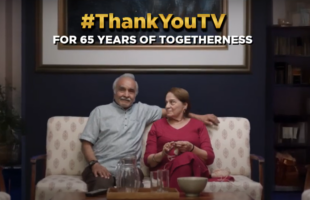According to the May 2008-issued ‘Indonesia in View’ report from the Cable and Satellite Broadcasters Association of Asia (CASBAA), with just 2 percent of over 40 million TV households, Indonesia’s pay-TV market penetration remained low compared with other Asian markets. However, pay-TV growth there had been brisk over the previous 12 months with legitimate pay-TV subscriptions (individual, residential and multi-dwelling households) doubling to 785,000 in Q1 2008. A newly competitive environment had seen operators differentiate consumer offerings through premium content, while some had secured new channels and launched additional local-language programming such as a new Muslim channel and music channels. Pay-TV take up had also been driven by the launch of low cost pre-paid services. The report says that September 2007 saw the government issue five new satellite subscription TV preliminary licenses required to start commercial trials within one year of receiving the license which will add a further dynamic to the Indonesian pay-TV sector. In addition, a further 28 companies have submitted applications for subscription TV licenses using a range of technologies; however the government is not expected to issue any new licenses until 2009 at the earliest. “Major operators continue to differentiate themselves through acquisition of high quality content and this pattern is expected to intensify over the next few years as competition intensifies,” said the CASBAA report – adding that the previous fifteen months had seen both Astro (PTDV1) and Indovision launch additional self-produced channels; PT Direct Vision (PTDV) had secured the exclusive rights to several categories of sport programming including EPL; while Indovision had brought on board three new international channels. It emerged mid-2008 however, that all was not well at joint venture PT Direct Vision, where internal conflict was brewing between Astro All Asia Networks plc and 49 percent shareholder Lippo Group – principally regarding a sum of Rp2.5 trillion (then US$245 million) allegedly unpaid by the latter to the former. When the Trademark License Agreement allowing PT DV to use the Astro name expired on August 30, 2008, at the request of PT DV, Astro agreed to extend the period for PT DV to settle its outstanding payments and continue to use the name under a Trademark License Agreement up to September 30, 2008, extending it again to October 19, 2008. By 20 October 2008, however, with no resolution in sight, Astro All Asia Networks Plc said in an announcement to Bursa Malaysia that as no payments had been received from PT DV, Astro’s Board of Directors of had decided to cease all Support and Services and to terminate the Trademark License Agreement. At that time, PT Direct Vision claimed 98,000 subscribers. “Astro has supported PT DV since February 2006 in the belief that arrangements that would have allowed it to invest in PT DV would be concluded,” said Astro legal counsel Todung Mulya Lubis. “But since it has been more than two years and there is no indication that any such arrangements will be concluded or that Astro will be paid for the Support and Services that it has provided, its Board has determined that it has no option but to terminate its support to PT DV.” The deadline extension, Todung explained, “was to give PT DV’s shareholders, affiliates of the Lippo Group, time to pay Astro for the Support and Services provided or agree on an alternative solution to the dispute that has arisen over the previously proposed joint venture in PT DV. As Astro has never been compensated for any of the approximately Rp2.5 trillion in Support and Services that it has provided to PT DV, and given that; (1) there has been no attempt by the Lippo Group to find an acceptable alternative to the previously proposed joint venture; and (2) that Astro is not and has never been a shareholder in PT DV; this is clearly a situation that could not be allowed to continue indefinitely,” he said. Meanwhile August 2008 saw the emergence of AORA, a satellite pay TV platform of PT Karyamegah Adijaya, headed up by president director Ongki P. Soemarno and president commissioner Rini M. Soemarno. Widely seen, although not yet officially recognized, as Astro Nusantara’s reincarnation in Indonesia, AORA commenced its nation-wide broadcast activity in the beginning of August 2008 with a 10 channel introductory service, highlighting the 2008 Beijing Olympics. Four of the channels were dedicated to bringing the Olympic games and events to its customers’ homes. AORA earned the pay TV rights to the 2008 Olympics exclusively for Indonesia. In August 2008, the operator won the pay TV sole rights for Indonesia (previously with PT DV) to the Barclays Premier League (BPL) soccer 2008/2009 season and offered a new, 12- channel package service which includes ESPN and STAR Sports with BPL content. This allows AORA subscribers to watch in full the 370 BPL matches and selected LIVE matches in the 2008/2009 season, including preview shows and weekly highlights. Company says it “plans a full-commercial launch in the first quarter of 2009, offering at least 50 channels of premium value, local and international programs of various genres to customers across Indonesia.” On the subject of pre-paid services, the CASBAA report says, “In mid 2007, Telkomvision was the first operator to introduce pre-paid services. Take-up has been positive and has given their distribution numbers a boost. Currently pre-paid subscribers account for 90 percent of its DTH subscribers. Other operators currently do not have plans to introduce pre-paid services over the next year; however, this may change if pre-paid services prove popular.” The report also said that in the second half of 2008, both First Media and Telkomvision were expected to launch their own content channels with further channels in the pipeline over the next couple of years. Indeed, Telkomvision executives have been on the content buying trail at major markets – including the CASBAA Convention – for the past couple of years. But the impact of the financial crisis upon the Indonesian rupiah is not good news for the operator, and rumours surround the technology solutions deal between PCCW and TelkomVision which seems to be taking some time to finalize. President director and CEO TelkomVision Rahadi Arsyad remains upbeat, claiming 200,000 subscribers, targeting 500,000 by year end 2009 and 1 million by 2010. “Our sales have slowed down, but we are still growing!” he says. A 60 channel rollout had originally been mooted for Q1 2009, and Rahadi said the operator is aiming to have 100 channels by 2010. “We are looking for fresh new channels as well as to produce and develop local content,” he says, adding that (lack of) affordable packaging and product awareness have been two major factors hampering pay-TV in Indonesia thus far. TelkomVision packages are priced at: Bronze Rp 99, Silver Rp 175, Gold Rp 275, per month. On the Memorandum of Understanding signed with Hong Kong’s PCCW, Rahadi says TelkomVision and PCCW are, “Finalizing final details of the agreement for our strategic partner for Pay Television Broadcast.” CASBAA also highlights the ongoing problem of piracy in Indonesia, with the number of leaked subscribers up from 300,000 in 2007, to 350,000 in 2008, equating to a net piracy cost of over US$27 million. “Unauthorized redistribution remains a large problem in Indonesia,” says CASBAA. “However, the Broadcasting Commission, KPI has made a positive step to curb the problem through announcing in two provinces that unauthorized distributors must become resellers for licensed pay-TV operators or face legal ramifications. It is still too early to determine the effectiveness of this move or whether KPIDs in other provinces will take similar actions.” Asked about the problem of pay-TV piracy, TelkomVision’s Rahadi said, “We are worried, but we are in cooperation with regulators to control if not eliminate them. We continue using our watermarks logo on screen to identify our signal, if they are illegal we can catch them. Others have not put their logo on at all (some took it out) which is why you can only see our logo, and there are so many illegal’s using not only our signal!” Over at MNC-owned Indovision president director/CEO Rudy Tanoesoedibjo is gravely concerned about the impact of signal piracy on the operators 500,000 subscribers. “Three years ago it was a problem in only two or three provinces, maybe 200,000 -300,000 subscribers. Now it’s rife in 13 provinces, around 1.5 million subscribers. At Indovision we’re doing really well, increasing subscriptions by around 39,000 per month – then losing a lot to illegal redistribution of our signal. Churn rate used to be 0.8 percent per month, it’s now tripled to 2.4 or 1.5 percent per month. We could generate 30,000 new subs per month, but we’re losing 10,000-14,000 per month.” Tanoe met with several key broadcasters at CASBAA, and again during December’s Asia TV Forum, in encouraging a combined effort against the illegal redistributors. He wants everyone to work together to encourage pirates to legitimize their operations or face legal action. “An amnesty would see coverage area limited and illegal operators pay for content. Law enforcement would need channel providers, legal operators and CASBAA submit conditions to the relevant authorities and lobby them to enforce the case,” he says. CASBAA, meanwhile, praises change for the good on the regulatory front in Indonesia. “There have been few new formal rulemakings, as the government is currently working on resolving the frequency allocation for digital terrestrial broadcasting as well as drafting a new broadcasting regulation which will cover all current and future types of broadcasting technology. Both digitalization of broadcasting and the new regulation are not expected to be completed until 2009 at the earliest. In the meantime, the government has moved ahead with implementation of “Made in Indonesia” rules for advertising, and made ad hoc decisions limiting the permitted scope of exclusivity for certain sports programming. Overall, the largest change in the regulatory environment has been the improved relations between the two government regulatory bodies (Depkominfo and KPI) who now work together to monitor the broadcasting industry. The previous conflict over licensing seems to have been settled, and is no longer impeding policymaking.” Meanwhile, little has changed on the free-to-air front, as Intan Sukmawati, general manager Mediaedge:cia Indonesia explains. “If ratings are used as the indicator, than Sinetron ( Local Soap Opera ) still holds the highest ratings. Mainly because, this type of program is mainly placed in the Prime Time (6 – 10pm) slot. This has been unchanged situation for years.” “However, if ratings are not the only measurement, particularly for urban areas, reality show types of program shows greater popularity in terms of their ability to generate buzz / word of mouth.” TV remains stable, but terrestrial will continue to dominate. “Movement is not at all significant and the projection is that it will remain similar. Terresterial TV is still the number one medium in terms of penetration. The progress of pay-TV will remain evolutionary rather than revolutionary.” TVAplus
Ad – Before Content
Related Articles
Publicis India unveils heartwarming “Thank You TV” campaign for ZEE TV
Sphere Abacus sells true crime feature documentary Murder & Madness: The Cult Conspiracy to Prime Video
Spingo Continues Global Push into the Americas as O4 Media Signs Option Agreements with LA-based 5X Media and Brazilian outfit LaReina Entertainment
Keshet boards Red Alert with producer Lawrence Bende
FIFTH SEASON inks strategic partnership with Front Street Pictures for TV movies slates
Taiwan Hosts Asian Animation Summit for the First Time Bringing Together Major Buyers Netflix and Warner Bros.







